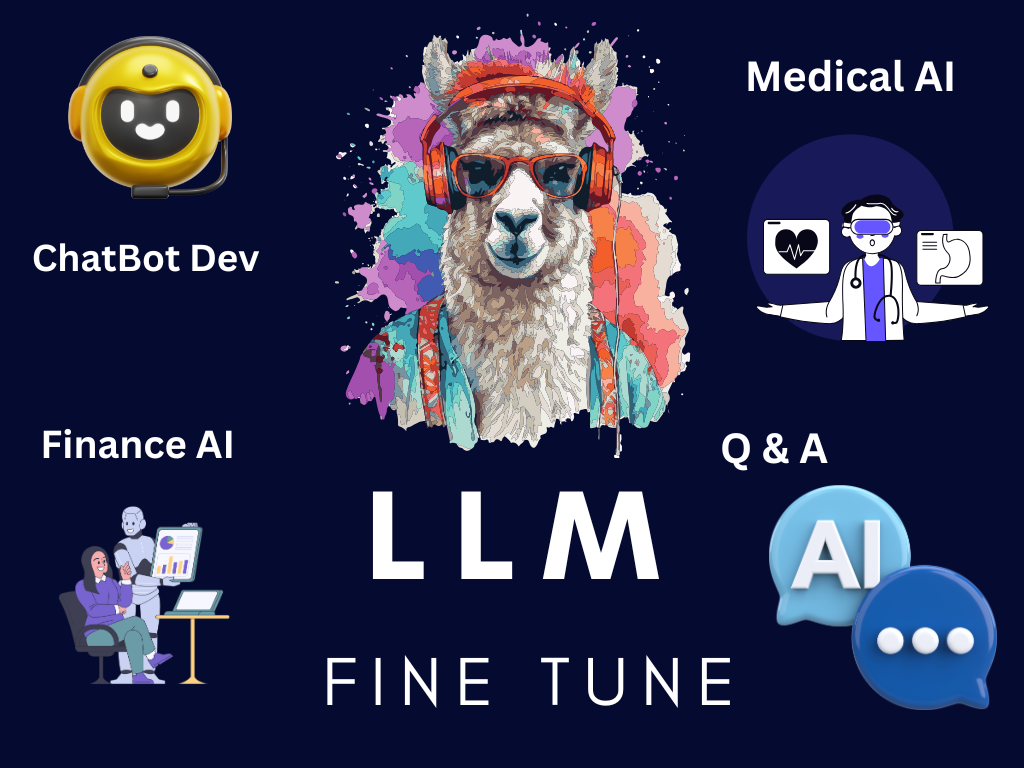Fine-tuning a Large Language Model (LLM) involves the additional training of a pre-existing model, which has previously acquired patterns and features from an extensive dataset, using a smaller, domain-specific dataset. In the context of “LLM Fine-Tuning,” LLM denotes a “Large Language Model,” such as the GPT series by OpenAI. This approach is crucial because training a large language model from scratch is highly resource-intensive in terms of both computational power and time. Utilizing the existing knowledge embedded in the pre-trained model allows for achieving high performance on specific tasks with substantially reduced data and computational requirements.
𝐊𝐞𝐲 𝐒𝐭𝐞𝐩𝐬 𝐢𝐧 𝐋𝐋𝐌 𝐅𝐢𝐧𝐞-𝐓𝐮𝐧𝐢𝐧𝐠:
1. Select a Pre-trained Model
The first step in LLM Fine-tuning is to carefully select a base pre-trained model that aligns with your desired architecture and functionalities. For instance, you might choose GPT-3 for its advanced natural language understanding capabilities or BERT for its strong performance in text classification tasks.
2. Gather Relevant Dataset
Next, gather a dataset that is relevant to your task. For example, if you’re working on sentiment analysis for movie reviews, you would collect labeled data consisting of movie reviews and their corresponding sentiment labels (positive, negative, neutral).
3. Preprocess Dataset
Once the dataset is ready, preprocess it by cleaning it, splitting it into training, validation, and test sets, and ensuring it’s compatible with the model you want to fine-tune. This might involve tokenizing text data or converting categorical labels into numerical format.
4. Fine-tuning
After selecting a pre-trained model, fine-tune it on your preprocessed relevant dataset. For instance, you could fine-tune GPT-3 on a medical corpus to enhance its ability to understand and generate medical terminology and context.
5. Task-specific Adaptation
During fine-tuning, adjust the model’s parameters based on the new dataset to help it better understand and generate content relevant to the specific task. This process retains the general language knowledge gained during pre-training while tailoring the model to the nuances of the target domain.
Fine-tuning LLMs is essential for natural language processing tasks like sentiment analysis (e.g., customer reviews), named entity recognition (e.g., extracting company names from financial reports), summarization (e.g., condensing news articles), and translation (e.g., translating documents between languages). This process allows us to leverage pre-trained models for specialized, domain-specific applications, enhancing our ability to understand context and generate coherent language.
llmfinetuning hashtagLLM hashtagGPT hashtagFinetune hashtagRAG hashtagAi hashtag Sentimentanalysis
